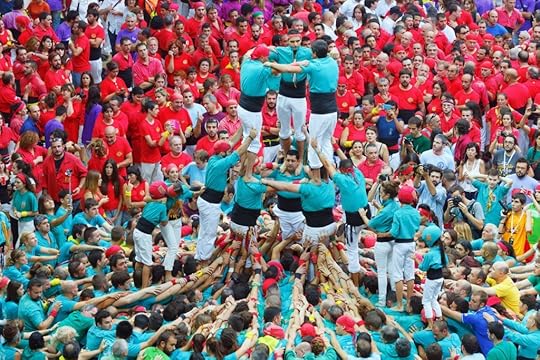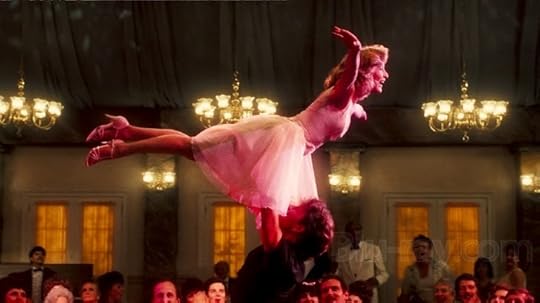Bathroom Readers' Institute's Blog, page 54
August 31, 2017
Snow Cones vs. Shaved Ice

As summer winds down, here’s a look at the subtleties that separate two favorite treats of the season.
Pretty much everywhere you go in the United States in the summer, it’s going to be hot. Fortunately, there are some coping mechanisms. Some are more appetizing than others: such as the wide variety of cold, sugary treats that help people cool down. There’s popsicles, ice cream, frozen yogurt, of course, as well as snow cones and shaved ice. Both of those usually consist of just two simple and inexpensive ingredients: ice and sticky-sweet syrup. You might have one or the other where you live, or, if you’re lucky, both. So what’s the difference between a snow cone and shaved ice anyway?
The major difference is the texture of the ice. The frozen stuff must be of a certain consistency to both hold and absorb all the syrup for as long as possible. If it wasn’t, it would slide right off into the bottom of the cup or paper cone, leaving just a “beverage” of syrup iced with tiny, too-smooth ice cubes. The ice in snow cones (or “sno-cones,” “SnoCones,” or “snowcones”) is generally made from ice cubes ground into tiny, jagged chunks. The syrup hangs around, but as the ice in the snow cone slowly melts and loses its shape, that flavored syrup moves its way on down and settles in the bottom of the paper cone.
That’s one other difference right there: snow cones come in paper cones. Otherwise they’d be called snow cups. And that would be confusing, because shaved ice is usually served in cups.
The ice is completely different in shaved ice, or “Hawaiian shaved ice” as its commonly sold. Rather than being ground, it’s carefully and finely shaved off a large block of ice. That ice is naturally flaky, super-fine, dusty, and fluffy. It closely mimics the consistency of real snow—more so than the ice in the thing actually called a “snow cone.”
The syrup is also delivered differently. On a snow cone, it’s drizzled; on shaved ice, it’s poured directly over the top.
The post Snow Cones vs. Shaved Ice appeared first on Trivia Books and Facts | Uncle John's Bathroom Reader.
August 29, 2017
Everything You Need to Know About “Despacito”

The “song of the summer”—the one that’s dominated radio and the pop charts—is “Despacito” by singer Luis Fonsi. More than a simple catchy song, it’s making history. Here’s a look at the song all the kids these days are into.
“Despacito” is the first song in the musical genre called reggaeton to hit #1 in the U.S. It’s a fairly new style, originating in Puerto Rico in the 1990s. It combines elements of American hip hop with traditional Latin American music. Reggaeton singer Daddy Yankee is known as the “King of Reggaeton,” and he makes an appearance on “Despacito.”
“Despacito” is the second song performed primarily in Spanish to top the charts. The first was “La Bamba.” A Mexican folk song popularized by the late Ritchie Valens in 1958, that version hit #22. Los Lobos’ cover of Valens rock n’ roll version, recorded for the Valens biopic La Bamba, hit #1 in 1987.
Because it’s the rare song sung in a language other than English to become a huge hit in the U.S., it’s tempting to write the song off as a novelty. It’s not—it’s one of the most successful pop songs ever. In July 2017, it was streamed online for the 4.6 billionth time—making it the most listened-to song ever. The previous record holder was “Sorry” by Justin Bieber—who makes a guest appearance on “Despacito.”
That success on Spotify, Apple Music, and other music services contribute to how the music industry magazine Billboard determines what songs place where on its charts. “Despacito” has spent 16 weeks and counting at #1 on the Billboard Hot 100—tying it for longest-running #1 single of all time.
The music video for “Despacito” is doing just as well as the song. It’s been watched more than 3.4 billion times on YouTube. That makes it the most watched YouTube video of all time.
What does despacito translate to? “Slowly.”
The post Everything You Need to Know About “Despacito” appeared first on Trivia Books and Facts | Uncle John's Bathroom Reader.
August 28, 2017
Great Book, Bad Movie

Hollywood frequently looks to the bookshelf to find the next big blockbuster, and it often works out—classics like Gone With the Wind, The Godfather, and Doctor Zhivago all began life as books. And sometimes, something gets lost in the translation to the screen.
The Scarlet Letter
In case you don’t remember the plot from eleventh grade English class, The Scarlet Letter is about Hester Prynne, forced to wear a red “A” on her clothes at all times in her 17th century Puritan village as a punishment for. While the movie has been adapted several times, it’s the 1995 adaptation starring Demi Moore that’s misbegotten. That one added in a bunch of sex scenes not present in Nathaniel Hawthorne’s original novel…as well as a happy ending that Hawthorne didn’t write. It was nominated for six “awards” at the 1996 Razzie Awards for the worst movies of the year, but only took home one (for Worst Remake or Sequel).
Cloud Atlas
David Mitchell’s Cloud Atlas is about the profound impact that humans can have on one another across years, decades, and even centuries. It takes place in six different timelines, most in the past, and some in the future, which means it was certainly going to be turned into a movie. The very capable Wachowskis (they made The Matrix movies) took on the task in 2012, and attempted to resolve the book’s complicated structure by having the same handful of actors play different characters across the story’s different eras. For example, Hugh Grant portrays a 19th century minister, a 1930s goon, a 1970s industrialist, a modern-day book publisher, a guy in 22nd century Korea, and a 23rd century cannibal. The movie didn’t quite succeed as planned. Of the movie, critic David Thomson of The New Republic said “even if life is an ocean made up of many drops, you may resolve that life is too short for this errant nonsense.” The movie version of Cloud Atlas earned $27 million on a $140 million budget.
The Bonfire of the Vanities
Critically adored writer Tom Wolfe published his indictment of 1980s financial excess in 1987, just as the “greed is good” decade was coming to an end. The 1990 film version directed by Brian De Palma (The Untouchables) and starring Tom Hanks and Bruce Willis should have been a movie for the ages. It wasn’t. Critics found the characters to be broad and obvious caricatures of financial types, and the comedy to be heavy-handed and awkward. The movie made $15 million at the box office (a third of its budget) and was nominated for five Razzie Awards.
Even Cowgirls Get the Blues
Cult favorite Tom Robbins has written several quirky, funny novels that are so out there that many critics have called his work “unfilmable.” Indeed, only one of his books has been made into a movie, and it was a disaster. Even Cowgirls Get the Blues is about a woman who has gigantic thumbs, who, naturally, becomes a hitchhiker. She travels around America and meets many colorful characters. Despite director Gus Van Sant (Good Will Hunting), star Uma Thurman, and Robbins himself narrating, the 1993 movie adaption mystified audiences. Its long-awaited premiere at the Toronto International Film Festival got such a bad reception that its release date was delayed for six months so the movie could be re-edited. That didn’t work, though, as critics called the movie “muddled, confused, ridiculously vulgar” and “unwatchable.”
The post Great Book, Bad Movie appeared first on Trivia Books and Facts | Uncle John's Bathroom Reader.
August 25, 2017
QUIZ: College Football Rivalry

#fca_qc_quiz_35240 button.fca_qc_button {
background-color: #58afa2;
box-shadow: 0 2px 0 0 #3c7d73;
}
#fca_qc_quiz_35240 button.fca_qc_button:hover {
background-color: #3c7d73;
}
#fca_qc_quiz_35240 div.fca_qc_answer_div.fakehover,
#fca_qc_quiz_35240 div.fca_qc_answer_div:active {
background-color: #8dc8bf;
}
The College Football Rivalry Quiz
School is back in session, and so is college football. Get in the game with
this quiz about the most storied rivalries in the sport.
[image error]
Start Quiz
Question
[image error][image error][image error][image error][image error][image error]
Your answer:
Correct answer:
NextYou got {{SCORE_CORRECT}} out of {{SCORE_TOTAL}}
[image error]SHARE YOUR RESULTSTweetPinEmailYour Answers
Retake Quiz
The post QUIZ: College Football Rivalry appeared first on Trivia Books and Facts | Uncle John's Bathroom Reader.
August 24, 2017
You Can Still Make It a Blockbuster Night

These products were once household names, until they slowly faded from public consciousness…except that they still exist.

Encyclopedias
For a kid writing a school report, their research options were limited: encyclopedias were the best bet. These attractively bound, multiple-volume sets of world knowledge were a fixture of libraries, schools, and the homes of families who were both wealthy and curious. (That’s because encyclopedias were expensive.) Somehow, the internet, with its vast expanses of human knowledge—and constantly updated user-created searchable databases and online encyclopedias that are free to use—hasn’t quite killed off the print encyclopedia. World Book just released its 100th anniversary edition. Cost of the 22-book set: $1,199.95.
Door-to-door vacuum sales
There are lots of places where you can buy a vacuum cleaner these days: department stores, big-box chains like Walmart or Target, housewares stores, hardware stores, and the internet. Back in the middle of the 20th century, there weren’t as many options, and millions got their handy-dandy carpet cleaner from a door-to-door vacuum cleaner salesman. The leading purveyor of door-to-door vacuum sales was the Kirby company. Amazingly, Kirby still exists…and they still sell vacuums by sending out salesmen to private homes. They have a website, but you can’t buy a vacuum there—you can only get one from a Kirby salesman coming to your house.
Tab
Sugar-free, name-brand sodas are as common, and sell almost as well, as their full-sugar counterparts. For example: Diet Coke, Diet Pepsi, and Sprite Zero. The first major and successful diet soda on the market was Tab, introduced by Coca-Cola in 1963. As it was more or less the only option for the calorie-conscious or diabetic throughout the ’60s and ’70s, it dominated the diet drink market. Two factors killed Tab’s sales: In the 1970s, studies linked saccharin, the sugar substitute used in the drink, to an increased risk of bladder cancer. Then, in 1982, Coca-Cola debuted Diet Coke, which tasted more like regular Coke than Tab did, and which was sweetened not with saccharin, but aspartame. That should’ve spelled the end for Tab, but it didn’t—it’s still in production today. About a million cases still annually to longtime Tab loyalists.
Blockbuster Video
The fall of Blockbuster is one of the most spectacular collapses in business history. After dominating the video rental market in the ’80s and ’90s, they all but disappeared in the 2000s after the rise of streaming video services like Netflix, and cheaper physical rental options like Redbox…along with the company’s reluctance to adapt to technology and competition. Dish Network bought what was left of Blockbuster after it filed for bankruptcy in 2010. Ten Blockbuster Videos still exist, owned and operated by franchisees who licensed the name. Those 10 stores are primarily in rural locations where customers can’t get fast-streaming movies, in areas of Alaska, Oregon, and Texas.
The post You Can Still Make It a Blockbuster Night appeared first on Trivia Books and Facts | Uncle John's Bathroom Reader.
Wide World of Weird Sports

Tired of baseball, basketball, and football? Your worries are over—we’ve found some unusual alternatives for you. (This article was first published in Uncle John’s Fast-Acting, Long-Lasting Bathroom Reader .)

HUMAN TOWER BUILDING
Where They Do It: Barcelona, Spain, during the Festa de la Merce each September
How It’s Played: Large groups climb one another to form human towers as tall as nine people high. Then, when they’ve stacked themselves as high as they can, a small child climbs all the way to the top to make it just a little bit taller. According to one account, “horrific collapses are common and many participants have ended up in the hospital.”
MAN VERSUS HORSE MARATHON
Where They Do It: Llanwrtyd Wells, Wales (the same village that invented “bog snorkeling”).
How It’s Played: Just like it sounds: people and horses run a cross-country race, on the theory that given enough distance over twisting, uneven terrain, a man can run as fast as a horse. The 21.7-mile race (real marathons are 26.22 miles), which has been run each June for more than 25 years, grew out of a bar bet. Who won the bet? The guy who bet on the horses…at least until 2004, when a man named Huw Lobb beat 40 horses and 500 other runners to win first prize. (His time: 2 hours, 5 minutes, 19 seconds.)
REAL ALE WOBBLE
Where They Do It: Would you believe Llanwrtyd Wells, Wales?
How It’s Played: It’s a grueling 35-mile mountain bike race in the rugged terrain around Llanwrtyd Wells, with three checkpoint/watering stations along the route. The only difference between this race and a regular bike race is that the checkpoints put out cups of beer for the riders instead of water. (Bikers may consume no more than 1-1/2 quarts of beer during the race, and if you’re under 18 you need a parent’s permission to enter.) “Beer gets down to the parts that you don’t get down to with water,” says race organizer Gordon Green. “It fortifies the cyclists.”
FATHER CHRISTMAS OLYMPICS
Where They Do It: In Gallivare, Sweden, 60 miles north of the Arctic Circle. (Not to be confused with the Santa Olympics held in—you guessed it—Llanwrtyd Wells, Wales.)
How It’s Played: Fifty or more contestants dressed as Father Christmas come from all over Europe to compete in several different Santa-related categories, including sled riding, reindeer riding, chimney climbing, and gift wrapping (with points for speed and beauty). Contestants are also rated on generosity, jolliness, and their ability to Ho-Ho-Ho. Any Santa caught smoking or drinking in front of children is automatically disqualified.
UNDERWATER HOCKEY
Where They Do It: All over the United States
How It’s Played: Teams of six players wearing fins, masks, snorkels, gloves, and helmets use 12-inch-long hockey sticks to push a puck across the bottom of a swimming pool. Most players can stay under water for about 20 seconds before they have to surface to breathe. The secret to winning is timing your snorkeling with your teammates so that you don’t all swim to the surface at once, leaving the playing field wide open to the opposing team. Twenty-one teams competed in the 2005 U.S. Nationals in Minneapolis, Minnesota.
CRICKET SPITTING
Where They Do It: At the Bug Bowl festival, held every April at Purdue University in West Lafayette, Indiana
How It’s Played: Thousands of contestants compete to see who can spit a dead, intact cricket the farthest. If the cricket loses its legs, wings, or antennae, the spit doesn’t count. The world champion is Dan Capps, a mechanic at a meatpacking factory, who spit his cricket 32 feet in 1998. “It’s just a matter of blowing hard,” he says. “Crickets aren’t very aerodynamic.”
The post Wide World of Weird Sports appeared first on Trivia Books and Facts | Uncle John's Bathroom Reader.
August 23, 2017
Dirty Years of 30 Dancing, or Rather 30 Years of Dirty Dancing

We hope you have the time of your life reading these facts about Dirty Dancing, one of the biggest movie hits of 1987.

The movie was filmed in the fall, but it takes place in the summer. The leaves had started to change color, so the crew had to spray paint trees and leaves green.
For the lead role of Baby, Jennifer Gray beat out Sarah Jessica Parker.
Patrick Swayze won the role of Catskills resort dance instructor Johnny over Val Kilmer and Billy Zane. Zane was close to securing the role, but producers watched his screen test with Jennifer Gray and concluded that the duo had no chemistry.
Swayze and Gray did have chemistry, even though they’d worked together on the movie Red Dawn and didn’t get along.
On its 10th anniversary in 1997, Dirty Dancing was re-released in a few hundred movie theaters. It was all at the prodding of Conan O’Brien. He implored Late Night with Conan O’Brien viewers to write and call the movie’s distributor, demanding that Dirty Dancing return to theaters, just as the Star Wars trilogy had done earlier that year. Amazingly, it worked…even though it was all a joke, and O’Brien said he didn’t even like the movie.
There have been a few Dirty Dancing themed TV shows. The first was a drama series on CBS. Dirty Dancing (starring Melora Hardin from The Office as Baby) lasted just 11 episodes. Another is a British reality show called Dirty Dancing: The Time of Your Life. Filmed at the Catskills resort-esque “Mountain Lake Lodge,” it was a dance competition show. One of the judges was dancer/actress Miranda Garrison, who had portrayed Vivian Pressman in the original film.
The soundtrack sold more than 11 million copies…and it went on the road. Amidst the soundtrack’s many early ‘60s chestnuts were a couple of modern-day songs: Bill Medley’s “(I’ve Had) The Time of My Life” and Eric Carmen’s “Hungry Eyes.” The two singers went a 90-city tour together in 1988 called “Dirty Dancing: Live in Concert.” Dancers were present on stage throughout almost the entire show.
The rest of the movie’s formula: sensual dancing. Before Dirty Dancing, screenwriter Eleanor Bergstein wrote a 1980 movie called It’s My Turn. Producers cut out a sexy dance sequence, which inspired Bergstein to write a whole movie about sexy dancing.
Two of the songs on the soundtrack were written by cast members: “She’s Like the Wind” by Patrick Swayze (Johnny) and “Hula Hana” by Jane Brucker (Baby’s sister, Lisa).
Swayze did his own stunts…and paid the price. On the scene where he balances on a log, he fell off so much that he hurt his knee, leading to severe swelling. A doctor had to be called in drain out the fluid.
Patrick Swayze turned down $6 million to make a sequel in the late ‘80s because he didn’t like the idea of sequels. A follow-up/remake finally hit theaters in 2004. Dirty Dancing: Havana Nights was essentially the same story as the original movie, but set in late ‘50s Cuba and was about a romance between a naïve American teenager and a Cuban revolutionary. The screenplay began life in 1992 as Cuba Mine, a political romance written by NPR host Peter Sagal. It was rewritten so many times that Sagal says there isn’t a single line of his original script up on screen. (The movie bombed, too.)
The post Dirty Years of 30 Dancing, or Rather 30 Years of Dirty Dancing appeared first on Trivia Books and Facts | Uncle John's Bathroom Reader.
August 22, 2017
Lebowski 9:29

Lots of movies have inspired their own fan conventions. Let’s see, there’s Star Trek and Star Wars and…The Big Lebowski? (This article was first published in Uncle John’s Curiously Compelling Bathroom Reader.)

Big Flopski
When The Big Lebowski hit theaters in 1998, it didn’t make much of a splash. Though it met with critical acclaim and was well received by loyal fans of Joel and Ethan Coen, the film’s director, producer, and co-writers, it barely broke even at the box office. Following on the heels of Fargo, the Coens’ most successful film to that point, Lebowski’s modest earnings came as a disappointment. But then in 1999 it went to video and became a cult classic.
As Lebowski fans will tell you, this is a movie that gets better with repeat viewings. There are so many threads woven into the complicated plot, and so much dry humor and memorable dialogue, that the film simply can’t be taken in at a single glance. The Big Lebowski is one of those movies where you catch something new every time you watch it.
Here’s the basic plot: In a case of mistaken identity, Jeff “The Dude” Lebowski—a lazy, unemployed, hippie bowler—is assaulted by thugs who are actually looking for a paraplegic millionaire named Jeffrey Lebowski, whose trophy wife “owes money all over town.” During the course of the assault, the assailants pee on The Dude’s living room carpet. Deciding to seek restitution from the real Lebowski (because “the carpet really tied the room together, man.”) The Dude and his two bowling buddies, Walter and Donny, are drawn into a web of intrigue involving kidnapping, pornographers, and nihilists; Lebowski’s avant-garde daughter, Maude; a high-school student whose father used to write for the TV western, Branded; and intricately choreographed bowling-dream sequences. There’s a lot more, but you’ll have to watch the movie a few times to figure it all out…which is exactly what thousands of devoted fans have been doing for nearly a decade.
Why Not?
Three years after the movie’s release on video, two Lebowski fans, Will Russell and Scott Shuffitt, were killing time while manning a T-shirt booth at a tattoo convention in Louisville, Kentucky. Business was so slow that the two friends began entertaining themselves by quoting lines from Lebowski. The people at the next booth turned out to be fans as well, and soon joined in. Eventually, Russell and Shuffitt’s booth became the most popular spot in the convention hall, with bored vendors congregating to repeat their favorite bits of dialogue from the film. At some point, according to Russell, “Scott and I were like, man, if they can have this goofy tattoo convention, we should have a Big Lebowski convention.”
Bowling and What-Have-You
Because bowling is a central theme in the movie, they decided the event should be held in a bowling alley. Unfortunately, the only alley in Louisville that they could afford was a Baptist-run establishment that prohibited both drinking and bad language—a problem because it’s hard to quote lines from the film without cursing, and because The Dude is rarely seen without a White Russian in hand (at one point he can’t find any half-and-half, so he mixes his White Russian using powdered nondairy creamer). Nevertheless, the alley was rented and, with a $42 advertising budget, the “First Annual Big Lebowski What-Have-You Fest” was scheduled for October 2002. They expected a handful of their friends to show up and were surprised when 150 people—dressed up as their favorite characters from the movie—arrived for a night of bowling and a screening of the film.
Russell and Shuffitt immediately began making plans for the second festival. Word got around on the Internet, and it proved to be almost too successful: 1,300 devotees showed up to a venue that could only hold 800. The following year 4,000 fans came…and the event’s organizers have never looked back—they’ve added festivals in Las Vegas, New York, Los Angeles, and Austin, Texas.
The Dude Abides
The event has taken on a life of its own. A few years ago, strange signs began appearing in the crowds at concerts and sporting events. Back in 2003 they read, “Lebowski 7:19.” The next year: “Lebowski 6:19.” These are not references to some book of cinematic scripture; they are the dates of the next annual Lebowski fest.
The post Lebowski 9:29 appeared first on Trivia Books and Facts | Uncle John's Bathroom Reader.
August 21, 2017
The Worst Baseball Players of All Time

You have to be a little good to even make it into the major leagues. But once you’re there…all bets are off.

Marv Throneberry
The 1969 World Series champion New York Mets were nicknamed the “Miracle Mets” because they’d had one terrible season after another up to that point. The franchise’s first year in existence, 1962, still ranks as the worst record every put up by a modern major league team: 40-120. Playing on that squad was “Marvelous Marv” Throneberry, who enjoys the honor of being about the worst player on the ’62 Mets, the worst team. Among the Mets starting lineup, he scored the fewest runs, stole the least bases, and had the second-lowest batting average. He was just as bad, if not worse, as a fielder: he committed 17 errors at first base for a fielding percentage of .981—a major league record. At least he hit a few triples…except umpires reversed it when they realized he forgot to touch both first base and second base on his way to third.
Mario Mendoza
Mendoza was so bad that the standard by which hitters are judged to be good or not was named after him. If a player is below the “Mendoza Line,” it means he has a woeful batting average of .200 or under. After somehow spending eight years in the majors, with Pittsburgh, Seattle, and Texas, Mendoza amassed a batting average of just .215 (and with four home runs).
Bob Uecker
Perhaps because he’s enjoyed a long, successful career as the radio announcer for the Milwaukee Brewers, an actor (Mr. Belvedere, Major League), and self-effacing about how bad of a player he was, he doesn’t enjoy the same “honor” as Mendoza. But Uecker was actually worse. From 1962 to 1967, he was a catcher for the Milwaukee Braves, Philadelphia Phillies, and St. Louis Cardinals. (“I helped the Cardinals win the pennant. I came down with hepatitis. The trainer injected me with it.”) Over that time, he hit exactly .200—or exactly on the Mendoza Line.
Joe Shlabotnik
He’s a fictional character, but no list of bad baseball players would be complete without the comically bad Shlabotnik—Charlie Brown’s favorite baseball player in the Peanuts comic strip. Of course he’s Charlie Brown’s favorite—he’s the adult version of Charlie Brown, which is say an unlucky sad sack. In 1963, he’s mentioned in Peanuts for the first time when Charlie Brown is upset his favorite player, Shlabotnik is sent down to the minors after hitting a batting average of .004 (one hit all year). He also popped out in the bottom of the ninth, but still circled the bases like he’d hit a game-winning home run. After his playing days are over, Shlabotnik takes a job as manager of the minor-league Waffletown Syrups. His tenure lasts a single game.
The post The Worst Baseball Players of All Time appeared first on Trivia Books and Facts | Uncle John's Bathroom Reader.
August 17, 2017
Why Is It So Expensive?

It’s hard to enjoy the finer things in life when the finer things are so expensive. We’ll skip the caviar and stick to our good ol’ beef jerky. Wait, that’s expensive, too?! What’s going on here?

Caviar
The little black eggs, which are traditionally the salt-cured roe of the sturgeon, can cost as much as $300…an ounce. Other fish-egg pastes that are labeled caviar may be cheaper, but they’re not necessarily the eggs of a sturgeon. Only caviar that came from a sturgeon can be rightfully labeled “caviar.” And the best caviar, historically, comes from the beluga sturgeon, which are found only in the Black Sea and the Caspian Sea. Roe is harvested from sturgeon that have reached maturity and full adult size—about 4,000 pounds. It’s so expensive because those gigantic fish are not only rare, but hard to catch. They’re also endangered, which ups the price a bit.
Saffron
In short, this spice, used in Spanish and Middle Eastern dishes, is expensive because its rare. The usable part, or the saffron thread, is a small part of the purple flower of the saffron plant. Those little threads in a jar are the stigma plucked off the end of the red pistol, the plant’s female sex organs. Each saffron flower contains a maximum of three threads. Result: It takes around 75,000 saffron flowers to produce a pound of saffron threads.
Beef jerky
It’s just a few ounces of meat, so why does an ounce or two of the stuff cost seven or eight bucks? Well, because it works out to being a pretty good price…for steak. Good pieces of beef are used to make the jerky, which loses almost two-thirds of its weight when dehydrated. All of a sudden, 12 ounces of steak becomes just a few ounces of beef. Factoring in labor and production costs, the price is still consistent with regular, fresh meat…on an ounce-by-ounce basis, that is.
The post Why Is It So Expensive? appeared first on Trivia Books and Facts | Uncle John's Bathroom Reader.







